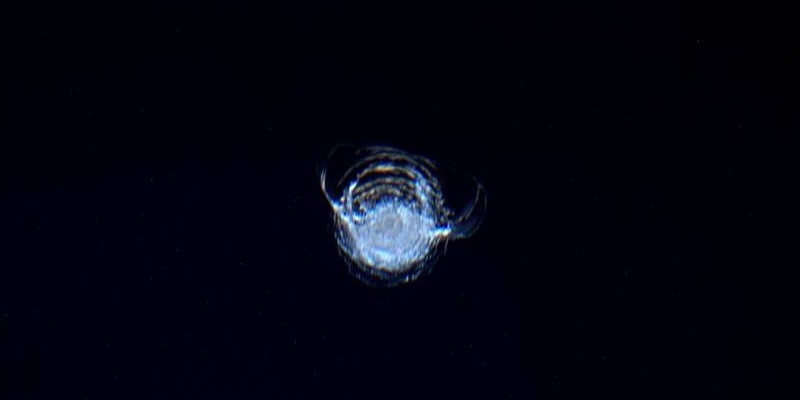
An international team of scientists is currently developing a laser facility for the ISS. With the help of this system, the station will be able to avoid the threat of a collision with large and small debris,
writes RIA Novosti. Boris Shustov, Chairman of the Expert Group of the Council on Space Threats, Corresponding Member of the Russian Academy of Sciences, spoke about the installation itself at a meeting of the RAS Council on Space.
Currently, in order to avoid collisions with space debris, the operators of the ISS perform evasive maneuvers. They are carried out using the engines of both the station itself and the cargo ships docked to it. Shy away from space debris comes several times a year.
The ISS was protected from the largest and most dangerous fragments, in particular, in 2014. Then the station's orbit was
raised by a kilometer - this was necessary in order to avoid the intersection of the station's orbit with the calculated trajectory of a fragment of the stage of the European Ariane 5 rocket.
“At the celebration of the 60th anniversary of the first satellite at the Space Research Institute, a meeting of the working group was held, at which scientists from Italy, France, Japan and Russia agreed that international cooperation would be formed. All of them will think about using orbital lasers placed on the ISS in order to avoid collisions with small, several centimeters, but the most numerous and therefore most dangerous fragments of space debris, ”Shustov said.
And indeed, if large fragments are cataloged, the trajectory of their movement is known, then small fragments from the Earth are not visible. Accordingly, any pieces of space debris can collide with the ISS at any time.
 Damage to the window in the module "Dome". The diameter of the damaged area is about 7 mm
Damage to the window in the module "Dome". The diameter of the damaged area is about 7 mmThis has already happened. For example, in 2016, a detached fragment of paint or a small metal fragment with a size of no more than a few thousandths of a millimeter collided with the porthole of the Dome module. Then the porthole was a bit damaged. But if the fragment was bigger, the porthole would have suffered much more, and who knows what this incident would have turned out for the ISS inhabitants and the station itself.
It moves in orbit at a speed of 7.66 km / s (27600 km / h), so that any fragment flying in a different orbit can cause damage. Station portholes with a diameter of 80 cm and a thickness of 10 cm are made of laminated quartz and borosilicate glass, so that collisions with microscopically small fragments do not pose any threat. But larger fragments can already cause critical damage. If the fragment size exceeds 10 cm, then the damage to the ISS will be very heavy. NASA currently tracks about 500,000 different pieces of
space debris .
So the additional protection of the ISS does not hurt. “Now in Japan and Europe, projects of creating such installations are being seriously discussed. The parameters of lasers, which now exist, both in terms of average power and peak power, are sufficient for solving the problem of changing the orbit of small space debris elements 10 centimeters or less in size, ”said President of the Russian Academy of Sciences Alexander Sergeev.
According to experts, Russian scientists can help reduce the size and technological complexity of the orbital laser. Initially, the idea of creating such a system belonged to Japanese experts. Then they proposed a design that envisioned energy concentration from 10,000 fiber optic channels. Russian scientists are confident that the design of the laser can be simplified. “We offered our colleagues to reduce the number of channels from 10 thousand to 100 by using instead of fiber so-called thin rods, which are being developed at our institute,” noted Palashov.
So far, scientists are working in the direction of creating the laser itself and a platform for placing it on a spacecraft. But the laser control interface is an issue that is not affected yet.
A separate aspect of the problem is the laser power and its supply with the required volume of electricity. In order for it to work, the laser will need all the electricity generated by the ISS. Experts, realizing that the station cannot be de-energized, because it deprives the idea of installing a laser of any meaning, suggest solutions to reduce the load on the power system. In particular, the duration of the shot can be limited to ten seconds. 200 seconds will require a laser setup to recharge. The firing range will be about 10 kilometers.
The mass of the laser will be about 500 kilograms, and its volume - one or two cubic meters. The laser power will simply evaporate the space debris, which will turn into a metal cloud consisting of particles of such size that they will not pose a threat to the ISS and other spacecraft.